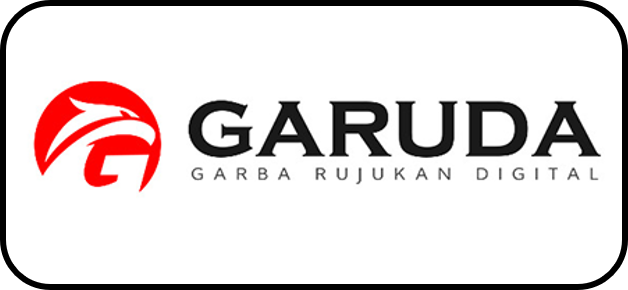Strategi dan Prospek Pengembangan Jambu Mete (Anacardium Occidentale. L) Kabupaten Jember
Downloads
The increasing growth of world cashew consumption is an opportunity for Indonesia and East Java province to increase cashew production. Cashew production on a national scale reached 95,000 tons per year. East Java province contributed about 11% of the national cashew production. Jember is famous as a center for cashew producer in the Eastern region of East Java province and has great potential in the development of agribusiness/agroindustry cashew nuts. However, they found some of problems that hamper the success of cashew farming. The purpose of this study is to formulate a strategy and analyze the development prospects for of cashew Jember Regency. The analysis technique used were Internal Factor Evaluation (IFE) matrix, External Factor Evaluation (EFE) matrix, Relative Competitive Position matrix, Internal and External (IE) matrix, and SWOT matrix. The results showed that internal factors are a major force in cashiew farming was cultivation techniques, while being the weakness was the production and marketing. External factors were the largest opportunity in the farming of cashew was the suitability of land and government policies, while the greatest threat is climate risks and uncertainties. The strategy recommended in the development of cashew Jember Regency is a growth-oriented strategy through horizontal integration (concentration through horizontal integration) with strategic priorities: (1) improving farming techniques with input suitable productive land, quality seeds and adequate capital, so that the product cashew produced can be more qualified and have a more competitive price in the market; and (2) more consistently maintaining the quality of the product, so that the consumer confidence is also increasing.
Bryson, J. M., & Roering, W. D. 1987. Applying Private Sector Strategic Planning to The Public Sector. Journal of the American Planning Association, , 53(1).10.
Bryson, John.M. 1995. Strategic Planning for Public and Nonprofit Organizations. A Guide to Strengthening and Sustaining Organizational Achievement. Revised Edition: San Francisco. Jossey-Bass Publisher.
CS Bisnis UKM. 2009. Indonesia Mengekspor Mete Terbesar. http://bisnisukm.com/indonesia-pengekspor-mete-terbesar.html (05 Maret 2009) (Diakses tanggal 21 Januari 2016).
David, F. R. 2009. Manajemen strategis - Konsep (Buku 1 Edisi 12). Jakarta: Salemba Empat.
Dinas Perkebunan Provinsi Jawa Timur. 2015. Luas Areal dan Produksi Tanaman Perkebunan. http://disbun.jatimprov.go.id/arealtanaman.php (updated tanggal 10 Juni 2015) (diakses tanggal 09 februari 2016).
Freeman, R. Edward, 1995, Manajemen Strategik, Jakarta: Pustaka Binaman Pressindo
Hunger, David K. dan Thomas L. Wheelen. 2003. Manajemen Strategis. Yogyakarta: ANDI.
Jogiyanto, H.M., 2005, Analisa dan Desain Sistem Informasi: Pendekatan Terstruktur Teori dan Praktik Aplikasi Bisnis, Yogyakarta: ANDI
Keban, Yeremias T. 1995. Indikator Kinerja Pemda: Pendekatan Manajemen dan Kebijakan, Yogyakarta: Fakultas Ilmu Sosial dan Politik UGM.
Olsen dan Eadie dalam Sarah. 2011. Memahami Dinamika Perencanaan Strategis. http://sarahhifis29.blogspot.co.id/2011/06/memahami-dinamika-perencanaan-strategis.html (12 Juni 2011) (diakses tanggal 09 februari 2016)
Pearce, J.A. dan R.B. Robinson. 1997. Manajemen Strategik: Formulasi, Implementasi dan Pengendalian. Jakarta: Bina Rupa Aksara.
Purwanto, E. Perdagangan Mete, Kesejahteraan Petani, dan Pelestarian Lingkungan. https://epurwanto.wordpress.com/perdagangan-mete-kesejahteraan-petani-dan-pelestarian-lingkungan-2/ (Diakses tanggal 21 Januari 2016).
Quinn, J.B. 1980. Strategies for Change. Homewood, IL: Richard Irwin
Udin, S. 2013. Jatim Genjot Produksi Mete. http://yayasanjambumete.blogspot.co.id/2013/02/jatim-genjot-produksi-mete.html (05 Februari 2013) (Diakses tanggal 19 Januari 2016).
Wheelen, T.L. dan Hunger, J.D. 2012. Concepts in Strategic Management and Business Policy. 13th (International) ed., Upper Saddle River, NJ: Pearson
Authors who publish with this journal agree to the following terms:
1. The author(s) hold the copyright of the article without restrictions.
2. The author(s) retain publishing rights without restrictions
3. The legal formal aspect of journal publication accessibility refers to Creative Commons Attribution (CC BY).
















